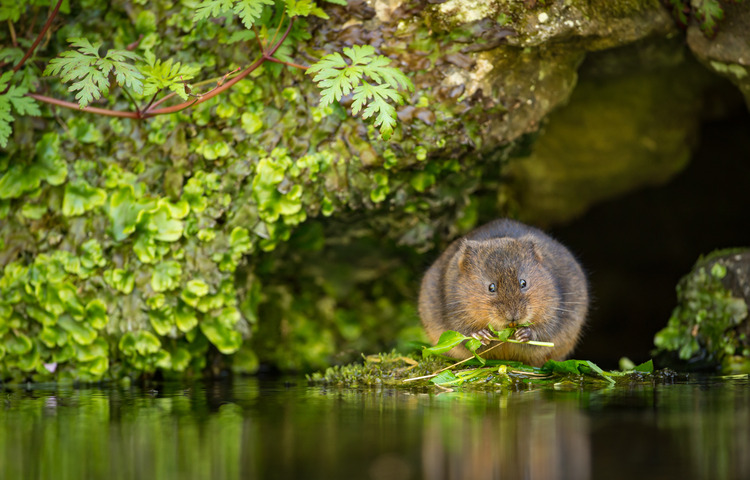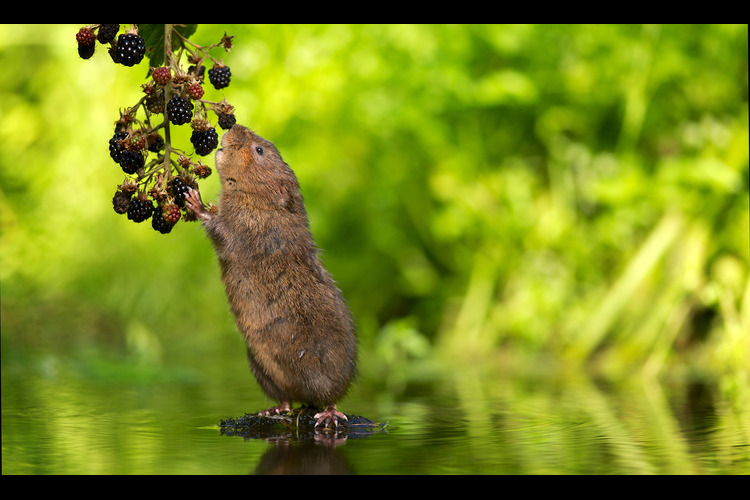
Water voles are now classed as endangered in the UK but are being reintroduced helping restore vital river ecosystems
By
One of the main characters of Kenneth Grahame’s children’s literary classic, The Wind in the Willows, was Ratty. Confusingly, Ratty was not based on a rat, but instead, he was a much cuter water vole. When The Wind in the Willows was first published in 1908, water voles were a common sight along riverbanks throughout the UK. But since then, gentle and kind Ratty has had a rough ride.
Although listed as Least Concern on the International Union for Conservation of Nature (IUCN) Red List in the UK, the situation is very different, and in recent decades, the species has suffered a catastrophic decline of 97 per cent (in Cornwall, they were wiped out completely). They are the UK’s fastest declining mammal species and are now classed as endangered in the UK.
The culprit for this precipitous decline is the American mink, an aggressive invasive species not fooled by the vole’s escape plan of diving into the river and kicking up mud to cloud the water and confuse their pursuer. The voles other escape plan is simply to hide in their river bank holes but unfortunately for the voles, female and young minks are also small enough to squeeze into those holes.
Other reasons for this decline are those familiar old stories of human-caused habitat loss and water pollution.
You might think that the loss of such a relatively small mammal would have little impact on a river ecosystem, but water voles are actually a keystone species whose lifestyle has a significant positive impact on riverbank ecosystems.
They help build waterway biodiversity by grazing numerous riverbank grasses, and their burrows help dry the soil along riverbanks and increase nitrogen levels in the soil. Both of these actions help increase the variety of plant species found along riverbanks, which in turn helps increase the range of animal species.
They are also a favourite food of many native carnivores, and so by re-introducing and protecting water voles, you are automatically helping creatures both higher up the food chain and lower down.

With the species having declined so dramatically, urgent measures were needed to keep it from becoming extinct throughout the UK, and so, over the past few years, from Cornwall to the edge of London, a number of re-introduction programs have taken place. The latest of these occurred this month in the Lake District as the last of 365 water voles were re-introduced around the Lowther Estate.
Before the release day, a lot of preparation work had to be done. Suitable release sites had to be found and, if necessary, habitat improvements made, and populations of American mink had to be controlled. But now that water voles are swimming free again, one of those involved in the project, Bill Kenmir, the Conservation Manager at Cumbria Connect, said: ‘Further releases planned across the area, we hope to create a network of interconnected populations across restored floodplains.’
And while Ratty isn’t yet out of trouble, there is increased hope that over time, when something rustles in the willows, it’ll be a water vole rather than just the wind.




